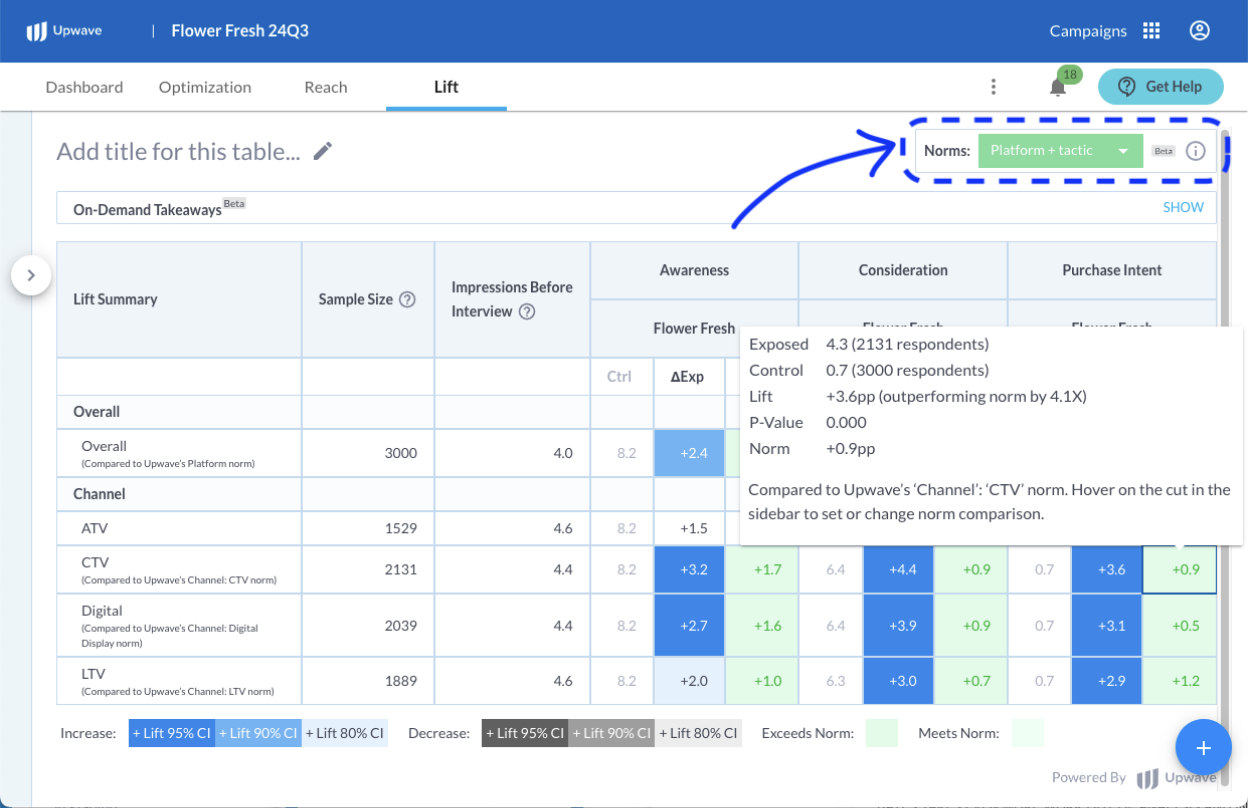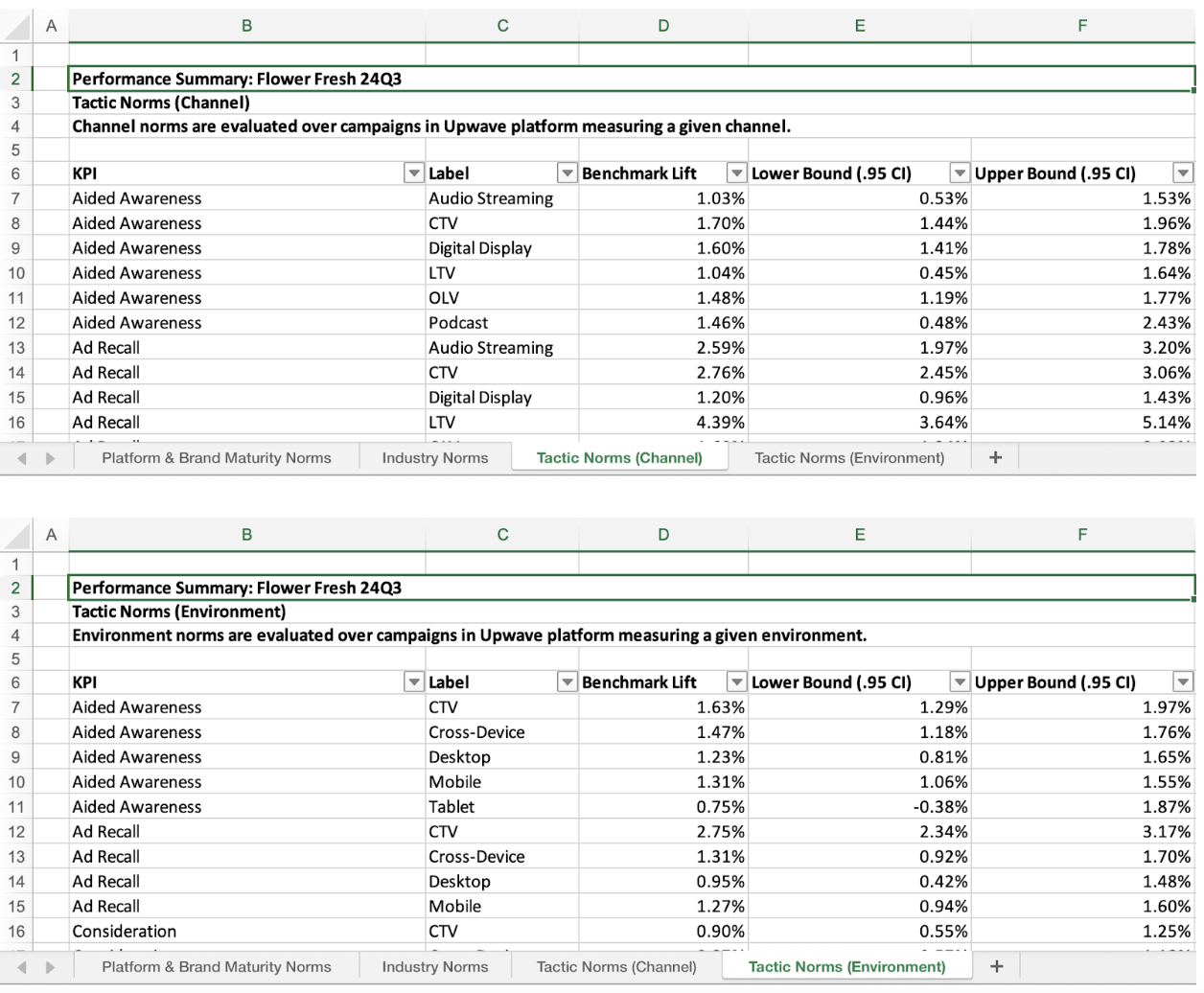What are Tactic Norms?
Tactic Norms can be used to compare your brand’s performance on a specific tactic.
Where can I access Tactic Norms norms?
Norms are available right in Upwave’s platform. You can access them in a variety of ways convenient to your different workflows.
View norms in lift tables (Open Beta)
Industry Norms can be viewed in lift tables, for faster, easier interpretation of your brand lift performance. Click the norms toggle above the upper right corner of a lift table and select Industry to display in a norms column that shows Industry Norms for the overall cut (no norms for other cuts).
Download a norms spreadsheet
As with option (1) above, navigate to your campaign’s dashboard tab and click the norms button. Within that same modal, Click the download link to download an XLSX spreadsheet. You’ll find separate tabs for Tactic Norms for available KPIs measured on your campaign, your campaign’s lift, and 95% confidence intervals.
The third tab houses Tactic Norms for Media Channels.
The fourth tab houses Tactic Norms for Ad Environments.
When should I use Tactic Norms?
Upwave provides you with different types of norms so you can contextualize the brand lift performance in ways that work for you.
Tactic Norms are what to use to benchmark specific tactics’ performance in the context of the broader marketplace. They allow you to maximize performance signals and potentially include competitors, providing comparison points beyond the performance of the campaigns in your own portfolio. They are based on final lift estimates for tactics classified by Bayes on campaigns.
Here’s some perspective on when to use other Upwave Norms.
How do I interpret Tactic Norms?
When assessing brand lift for a KPI and cut on your campaign against a Tactic Norm, first compare whether it’s higher, lower, or about the same. If your lift is about equal to the norm, then your tactic is doing as well as that tactic on the average campaign in the comparison set, correcting for the scale of your cut using the standard error. If higher, it’s better than average; and if lower, it’s less than average.
Here’s some more perspective on interpreting norms.
What KPIs have Tactic Norms?
Upwave reports norms for the following Brand KPIs for any type of norm when there is sufficient data:
Unaided Awareness
Aided Awareness
Ad Recall
Brand Preference
Consideration
Purchase Intent
Purchase Propensity
Familiarity
Favorability
Recommendation Intent
What tactics are supported in Upwave’s Channel Norms?
Currently, we support Media Channels and Ad Environment. We anticipate adding additional categories of tactics soon, including Video Length, Creative Size, and others.
Media Channels: Audio Streaming, CTV, Digital Display, LTV, OLV, and Podcast.
Ad Environments: Cross-device, CTV, Desktop, Mobile, Tablet
When are Tactic Norms updated?
Tactic norms are updated quarterly (typically several weeks into each quarter in order to include campaigns that ended in the preceding quarter).
How much do Tactic Norms change between updates?
With Tactic Norms, for most tactics we would expect typical changes quarter to quarter to be less than 0.1% points. For tactics less commonly employed and mapped, slightly larger changes on the order of 0.2% to 0.3% are possible.
How are Tactic Norms calculated?
When calculating Tactic Norms, Bayes first classifies tactic cuts on campaigns completed since the last update. Upwave then takes a weighted average by tactic of the most recent lift results of classified cuts for all campaigns included in the calculation. These weights follow a standard meta-analysis procedure that weights each estimate by the precision of the estimate (roughly proportional to the sample size of the campaign). Ultimately this procedure takes into account the accuracy of the individual lift estimates, while not giving too much weight to large campaigns.


